KOONS SUMMER IN FRANKFURT – SCHIRN AND LIEBIEGHAUS
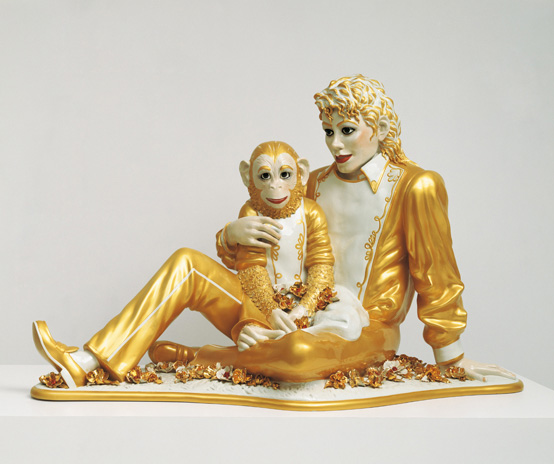
JEFF KOONS
THE PAINTER & THE SCULPTOR
20 June – 23 September, 2012
Press preview: Tuesday, 19 June, 2012, 11 am. The preview will begin at the Schirn Kunsthalle Frankfurt and continue at the Liebieghaus Skulpturensammlung. Transportation will be provided.
This summer, the Schirn Kunsthalle and the Liebieghaus Skulpturensammlung will be devoting themselves to the work of the U.S. American artist Jeff Koons (born in 1955), who has played a pioneering role in the contemporary art world since the 1980s. The two concurrent shows will deliberately separate the sculptural and painterly aspects of his oeuvre and present each in a context of its own. Encompassing some forty paintings, the presentation entitled “Jeff Koons. The Painter” at the Schirn will focus primarily on the artist’s structural development as a painter. With motifs drawn from a diverse range of high and pop-cultural sources, his monumental painted works combine hyper-realistic and gestural elements to form complexes as compact in imagery as they are with regard to content. In the show “Jeff Koons. The Sculptor” at the Liebieghaus, on the other hand, altogether around 50 world-famous as well as entirely new sculptures by Jeff Koons will enter into dialogues with the historical building and a sculpture collection spanning five millennia. Jeff Koons’s Antiquity, a new series in which he explores antique art and its central motif – Eros – will debut in Frankfurt on this occasion.
The exhibition “Jeff Koons. The Painter & The Sculptor” is sponsored by Bank of America Merrill Lynch, Gas-Union GmbH, Kulturfonds Frankfurt RheinMain, and City of Frankfurt am Main.
Jeff Koons was born in York, Pennsylvania in 1955. He studied at the Maryland Institute College of Art in Baltimore and the School of the Art Institute of Chicago and is today one of the world’s most prominent contemporary artists. His works are to be found at the Museum of Modern Art in New York, the Whitney Museum of American Art in New York, the Tate Gallery in London, the Stedelijk Museum in Amsterdam, the Museum Ludwig in Cologne, the Museum of Contemporary Art in Tokyo, and elsewhere. They have moreover been featured internationally in numerous solo exhibitions. He has been awarded many distinctions for his art, and his sculptures in the public realm – e.g. the monumental flower sculpture Puppy (1992) – have attained far-reaching popularity.
In his paintings and sculptures, Jeff Koons employs elements from the consumer world and “high culture” alike, quotes artistic epochs as readily as he does objects from everyday life and advertising, and thus draws our attention again and again to such categories as beauty and desirability. Within this context, he has become an unequalled master of the interplay between the sublime and the banal. Although his works quote familiar motifs from the consumer context, it is not for the sake of kitsch and irony. In an interview he commented: “I work with things that are sometimes referred to as kitsch, even if kitsch per se has never interested me. I always try to convey self-confidence, a certain inner sense of security, to the viewer. My chief concern in my work is the viewer.” Koons is interested “not in the complexity, but in the simplicity of being” and its acceptance. This aspect finds expression in his oeuvre in elementary themes such as childhood or sexuality. Contrary to the long tradition of subjectivity in art, however, Koons constantly emphasizes artistic objectivity, working in the tradition of the “ready-made.” Both his sculptures and his paintings have a particularly evocative and striking effect on the viewer through their exquisite craftsmanship and the lure of their surfaces.
The exhibition “Jeff Koons. The Painter” at the Schirn – to be spread out almost over the gallery’s entire exhibition space – will be the first ever to offer a comprehensive overview of the artist’s painterly work, from the early machine paintings of the Luxury & Degradation series and the Made in Heaven works to the large-scale hand-painted work of the Celebration, Easyfun, Easyfun-Ethereal, Popeye, Hulk Elvis and the new Antiquity series. The quotations from everyday life and various art-historical as well as general-historical epochs which Koons interweaves in his paintings are free-floating compositional elements assigned a modulatory or repetitive function. With the aid of image-editing computer programmes, he succeeds in superimposing many layers and creating a whole without a centre. By means of analytical attention to detail, he dissolves the pictorial composition which has thus evolved into a spectrum of multiply differentiated colours, only to have them then painstakingly transferred to canvas.
Cool, mechanical, and absolute perfection are the qualities that characterize these paintings which – even though they have been painted by hand – follow a clearly defined route. In the Made in Heaven series of 1989–91 that show the artist having sex with the Hungarian-Italian adult film actress and politician Cicciolina (Ilona Staller), who would later become his wife, the sculptures and paintings still differ distinctly with regard to motif. The mingling of the two media began in the context of Celebration, a series developed from 1994 onwards. A heart, a piece of cake or a children’s birthday party hat, placed on shiny, colourful gift-wrapping paper, stands out three-dimensionally while at the same time merging with the foil reflecting it, its background. In the two consecutive series Easyfun (1999–2000) and Easyfun-Ethereal (2000–02) – collages of body parts, foods, landscapes, everyday objects, quotations from past art, etc. – foregrounds and backgrounds, centres and edges are virtually no longer distinguishable from one another. With them, Koons attains a simultaneity and hybridity which virtually defy decipherment. In his more recent series, Antiquity, on the other hand, he draws from the bountiful repertoire of antique art and combines it with his own iconography.
The Schirn exhibition will bring the quotations as well as the thematic and compositional development of Jeff Koons’s painting oeuvre to the fore. What is more, throughout the 140 metres of the gallery’s length, the paintings will create a virtually magnetic force that – far from keeping the viewer at arm’s length – will ply him with universally understandable pictorial worlds.
In the exhibition “Jeff Koons. The Sculptor” at the Liebieghaus, the artist’s sculptures will be integrated into the museum’s own collection, which mirrors the history of sculpture from antiquity to Neoclassicism. In close cooperation with the artist, one of his numerous and often iconic sculptural works will be introduced to each of the Liebieghaus’s various sections, causing a range of widely different dialogues to ensue. The entire Liebieghaus ensemble – the richly detailed historicist villa, the gallery buildings and the large, fairy-tale-castle-like garden – will together accommodate the sculptures by Jeff Koons like a single big stage.
In various galleries, the presence of the Koons works will create visual plays in which they will often be discerned only on closer inspection. In his Statuary series, Koons consistently adheres to the motifs and forms of the European Baroque. It is left to the idiosyncratic choice of materials alone to trigger a suspenseful encounter between the modern Baroque forms cast in highly polished steel and the historical Baroque portraits in the Frankfurt collection. Other works, for their part, demonstrate astounding proximity to the historical works as regards material. In those cases, however, it is the motifs that will contrast strongly, for example when the colourfully glazed terracotta altarpiece by Andrea della Robbia is juxtaposed with the polychrome porcelain figure of a Woman in Tub (from the Banality series). In another room, Koons’s famous porcelain sculpture of pop idol Michael Jackson, showing him in a golden suit with his monkey “Bubbles”, will bask in the wide-eyed gazes of the partially gilded Egyptian death masks of Priestess Takait and the gods of the Egyptian pantheon.
The chief focus of the encounter between Koons and the history of sculpture so uniquely represented by the Liebieghaus will be the matter of the “migration of images” – Koons’s quotations and borrowings from past art-historical epochs. The story of Eros in his original Greek significance – above all in the pictorial context of Aphrodite, the goddess of love – will provide the leitmotif that links famous Jeff Koons works with masterpieces of antiquity. The affinity will perhaps be most evident in works from Koons’s most recent series, entitled Antiquity, which has not yet been shown to the public. These creations make direct reference to grandiose sculptures of Greek antiquity conjuring up the world of Dionysus and the goddess of love. At the same time, they illustrate the degree to which Koons translates antique traditions into modern forms – and proposes a modern approach to grasping their meaning in the process.
CATALOG: The exhibition will be accompanied by an extensive two-volume catalogue containing a foreword by Schirn and Liebieghaus director Max Hollein and texts by Babette Babich, Professor of Philosophy, Fordham University, New York, and aesthetic researcher; Andreas Beyer, art historian, and director of the German Forum of Art History in Paris; Jeffrey Fraiman, art historian, New York; Walter Grasskamp, Professor of Art History, Akademie der Bildenden Künste, Munich, and art critic; Scott Rothkopf, curator at the Whitney Museum of American Art; and Monika Wagner, Professor of Art History at the University Hamburg, all of whom will discuss different aspects of Jeff Koons’s oeuvre. The catalogue will moreover include an interview by Isabelle Graw, art critic and editor of the magazine Texte zur Kunst, with Jeff Koons, as well as contributions by the exhibition curators Vinzenz Brinkmann, Liebieghaus Skulpturensammlung, Matthias Ulrich, Schirn Kunsthalle, and Joachim Pissarro, Hunter College New York. Jeff Koons. The Painter & The Sculptor, 2 volumes in slipcase, German/English edition, approx. 360 pages, approx. 270 colour illustrations, design Kühle und Mozer, Hatje Cantz Verlag, Ostfildern, 2012.
VENUES: SCHIRN KUNSTHALLE FRANKFURT, Römerberg, D-60311 Frankfurt; LIEBIEGHAUS SKULPTURENSAMMLUNG, Schaumainkai 71, D-60596 Frankfurt. EXHIBITION DATES: June 20 – September 23, 2012. OPENING HOURS SCHIRN AND LIEBIEGHAUS: Tue, Fri–Sun 10 am –
7 pm, Wed and Thu 10 am – 10 pm. INFORMATION: www.koons-in-frankfurt.de; www.schirn.de, e-mail: welcome@schirn.de, telephone: +49-(0)69-29 98 82-0, fax: +49-(0)69-29 98 82-240; www.liebieghaus.de, info@liebieghaus.de, telephone: +49-(0)69-65 00 49-0, fax: +49-(0)69-65 00 49-150.
CURATORS: Vinzenz Brinkmann (Liebieghaus Skulpturensammlung), Matthias Ulrich (Schirn Kunsthalle), Joachim Pissarro (Hunter College, New York). PROJECT MANAGEMENT: Heike Höcherl. SPONSORED BY: Bank of America Merrill Lynch, Gas-Union GmbH, Kulturfonds Frankfurt RheinMain, City of Frankfurt am Main. MEDIA PARTNERS: Die Welt, Monopol – Magazin für Kunst und Leben, AD – Architectural Digest, Journal Frankfurt, VGF – Verkehrsgesellschaft Frankfurt am Main. MOBILITY PARTNER: Deutsche Bahn.
For further information please see www.bahn.de/kultur. ONLINE MAGAZINE: www.schirn-magazin.de.

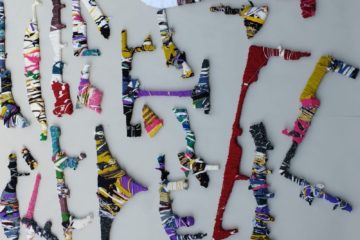
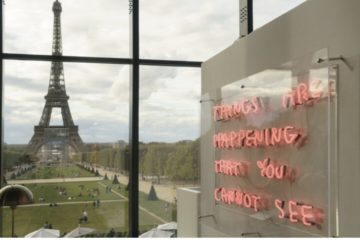
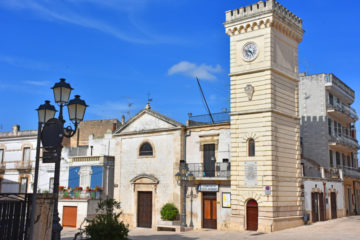
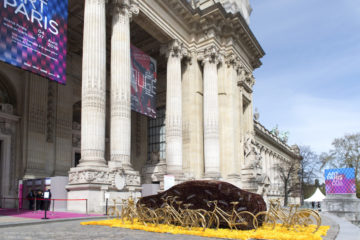

No Comment